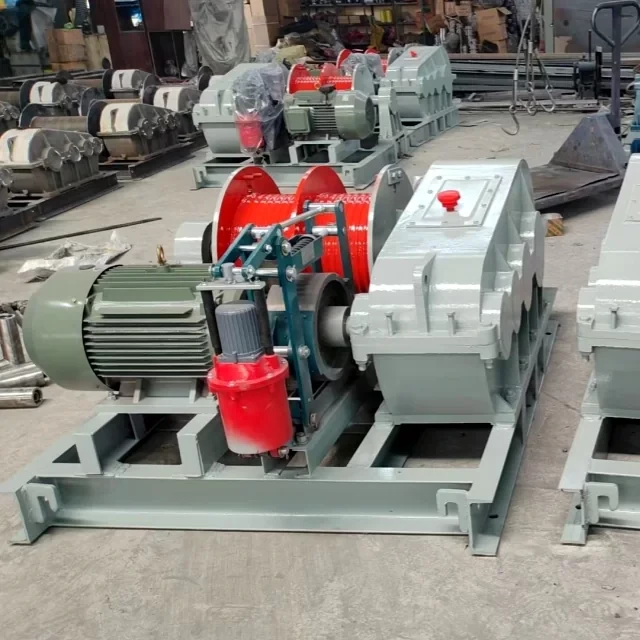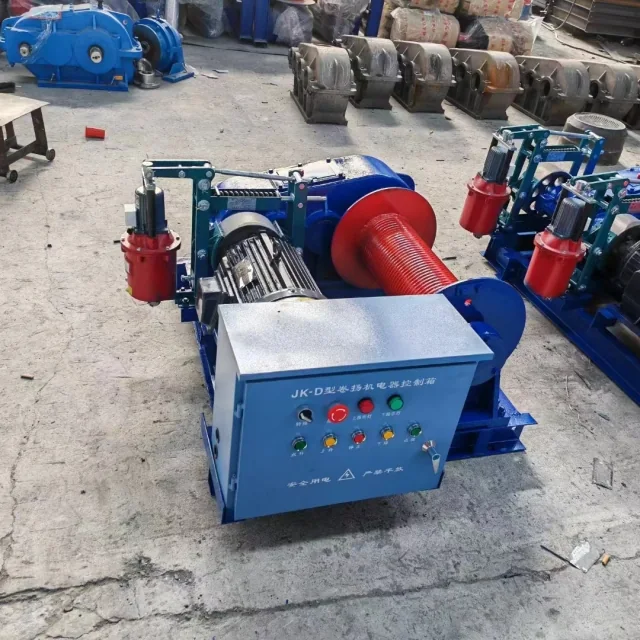Construction sites demand reliable lifting and pulling solutions that combine power with precision. Selecting the right winch system—and operating it within safety guidelines—can dramatically improve worksite productivity while reducing accident risks. This guide examines modern winch applications, selection criteria, and OSHA-compliant practices to help construction teams make informed decisions.
Winch Applications in Modern Construction Sites
Winches serve as the backbone for material movement and emergency response across job sites. Their versatility makes them indispensable for two primary functions:
Material Handling and Precision Positioning
- Vertical Lifting: Moving steel beams or prefabricated components to upper floors
- Horizontal Pulling: Positioning heavy machinery or aligning structural elements
- Tension Control: Maintaining precise force during bridge cable installations
Ever wondered how crews install glass panels on skyscrapers without cranes? Winches provide the millimeter-level control needed for delicate placements.
Emergency Recovery and Worksite Rescue
- Equipment extraction from excavation collapses
- Stabilizing overturned vehicles or machinery
- High-angle rescue operations with OSHA-mandated backup systems
Hydraulic winches particularly excel in these scenarios due to their consistent power output—a critical factor when recovering 20-ton excavators from muddy trenches.
Key Criteria for Selecting Construction-Grade Winches
Load Capacity vs. Site-Specific Demands
| Project Type | Recommended Capacity Buffer |
|---|---|
| Residential Construction | 1.5x max expected load |
| Bridge Work | 3x dynamic load potential |
| Demolition Sites | 2x debris weight estimate |
Always account for:
- Shock loads from sudden movements
- Friction losses in pulley systems
- Environmental factors (wind, slope angles)
Electric vs. Hydraulic Power Systems
Hydraulic Winches Dominate When:
✔ Continuous operation exceeds 30 minutes
✔ Submersion in water/mud is likely
✔ Existing hydraulic power sources are available (e.g., connected to excavator systems)
Electric Models Work Best For:
✔ Intermittent tasks with clean power access
✔ Projects requiring variable speed adjustments
✔ Urban sites with noise restrictions
Think of hydraulic systems like marathon runners—they maintain stamina, while electric models sprint with precision.
Safety and Compliance in Winch Operations
OSHA Standards for Winch Anchoring and Rigging
- Anchoring: Use only certified anchor points rated for 5x the winch's maximum load
- Wire Rope: Replace when 6+ broken wires appear in one rope lay or 3+ in one strand
- Operator Zones: Maintain 1.5x load radius clearance during operations
Preventing Accidents During Heavy Load Maneuvers
-
Pre-Lift Checks:
- Verify load weight matches winch capacity
- Inspect all hooks, latches, and safety catches
- Clear personnel from potential snap-back zones
-
During Operation:
- Use tag lines to control swinging loads
- Monitor hydraulic hoses for leaks (a 3000 PSI rupture can cut steel)
- Never exceed 75% of rated line speed
-
Post-Use Protocols:
- Fully retract cables to prevent corrosion
- Log maintenance needs in equipment records
Case Studies: Winch Deployment in High-Risk Scenarios
Tunnel Collapse Response (2023)
A hydraulic winch system successfully extracted a buried boring machine by:
- Creating a multi-point anchor system using rock bolts
- Implementing staged pulling to prevent secondary collapses
- Maintaining 24/7 operation for 72 hours without overheating
High-Rise Façade Installation
Electric winches enabled:
- Millimeter-accurate positioning of 8-ton glass panels
- Synchronized lifting via computerized controls
- Emergency braking when wind speeds exceeded limits
Conclusion: Building a Winch Strategy That Works
- Match Power to Purpose: Hydraulic for endurance, electric for precision
- Safety First: Treat every lift as a potential hazard scenario
- Maintenance Matters: A $500 cable inspection prevents $50,000 downtime
For construction teams relying on Garlway equipment, these principles ensure winches deliver both performance and peace of mind. The right system doesn't just move loads—it moves projects forward safely and efficiently.
Related Products
- Electric and Hydraulic Winch for Heavy Duty Applications
- Portable Small Trailer Winch
- Commercial Construction Mixer Machine for Soil Cement Mixing Concrete
- Portable Concrete Mixer Machine Equipment for Mixing Concrete
- Best 18000 Pound Drum Anchor Trailer Winch
Related Articles
- How Electric Winches’ Engineering Enhances Efficiency and Safety in Heavy-Duty Applications
- How to Choose the Right Winch for Heavy-Duty Applications: A Scenario-Based Guide
- How Quick Winch Rope Speed Transforms Industrial Efficiency
- How to Choose the Right Winch Power Source for Off-Grid Operations
- How Winch Design Powers Reliability and Adaptability in Demanding Environments



















